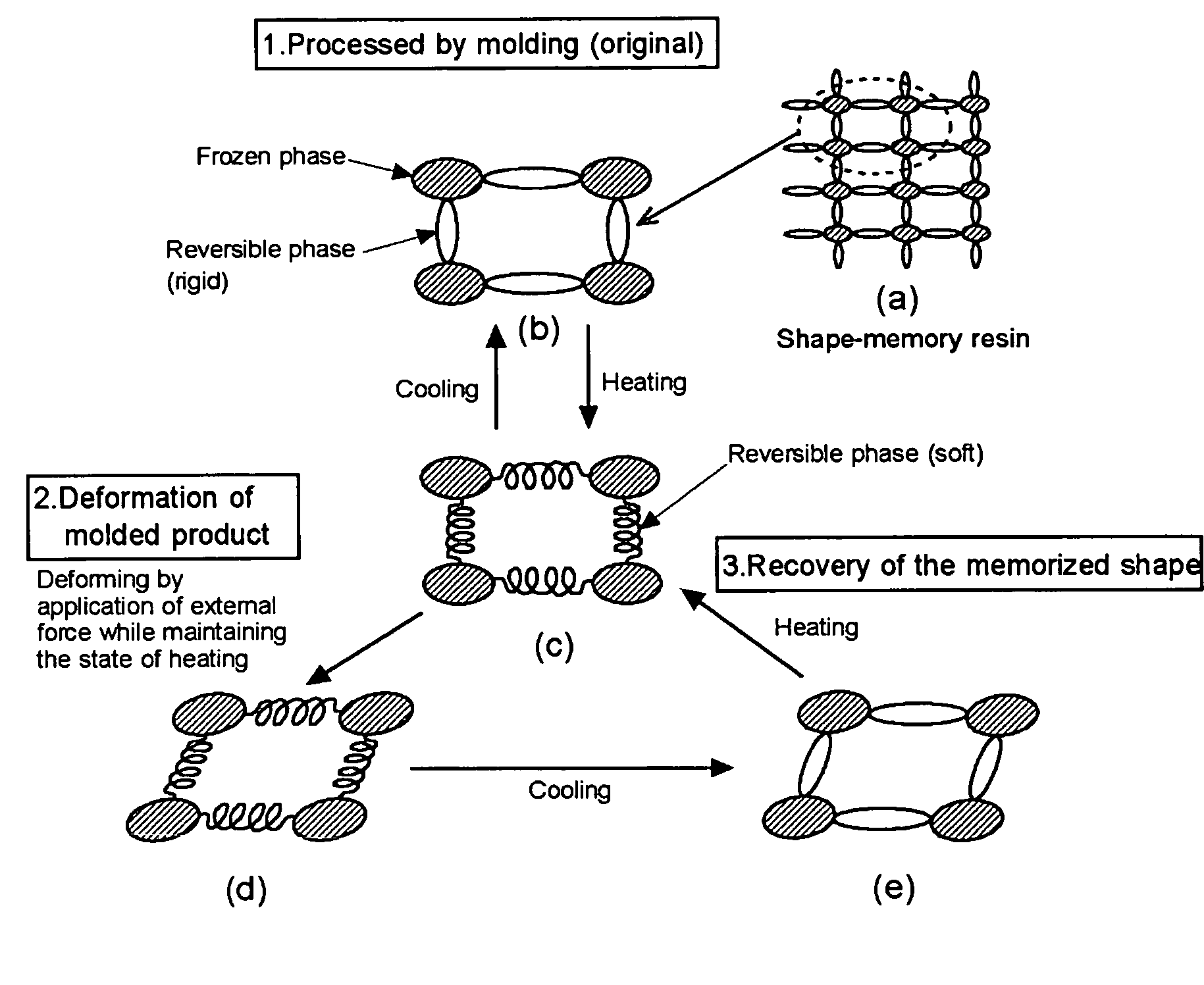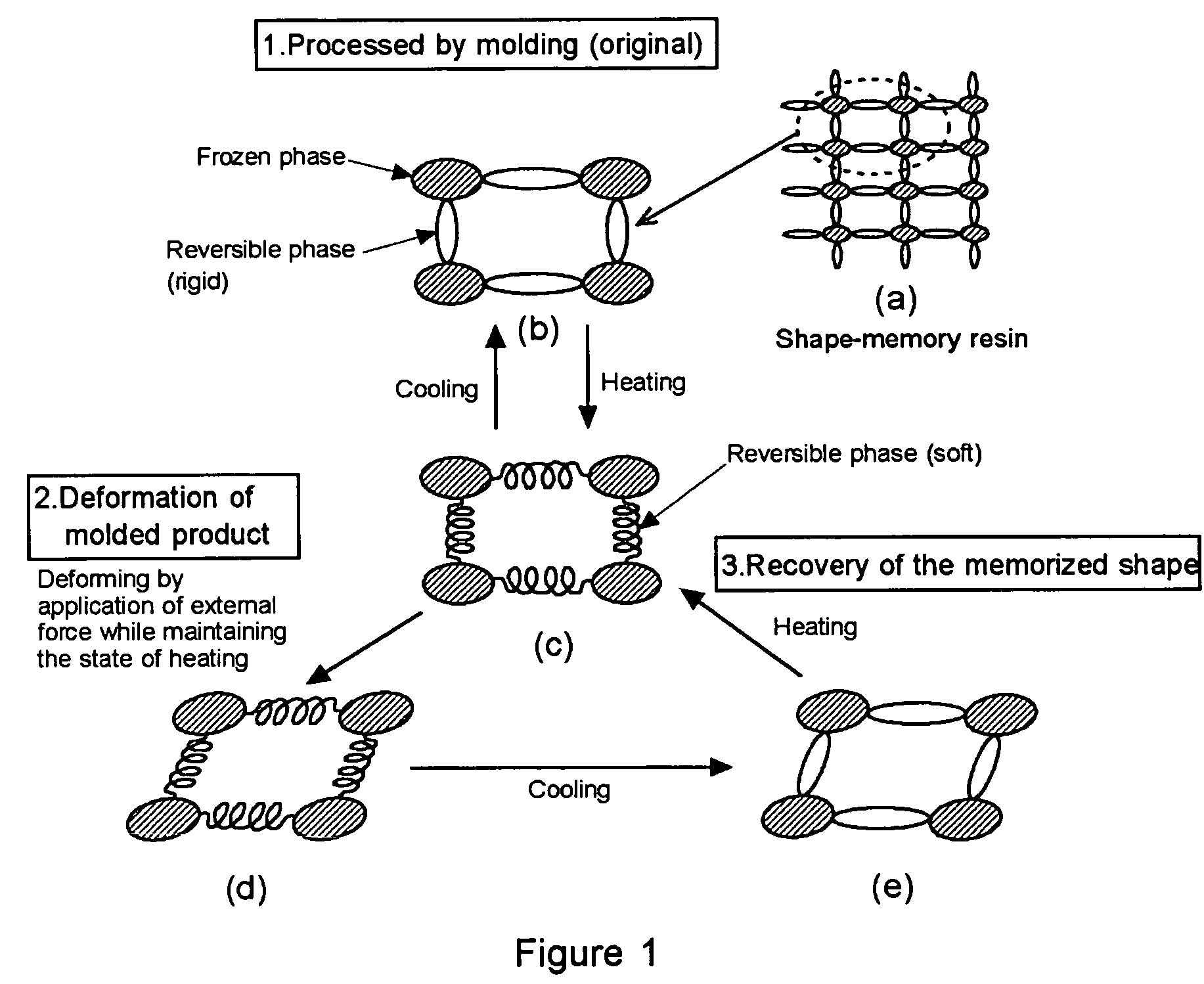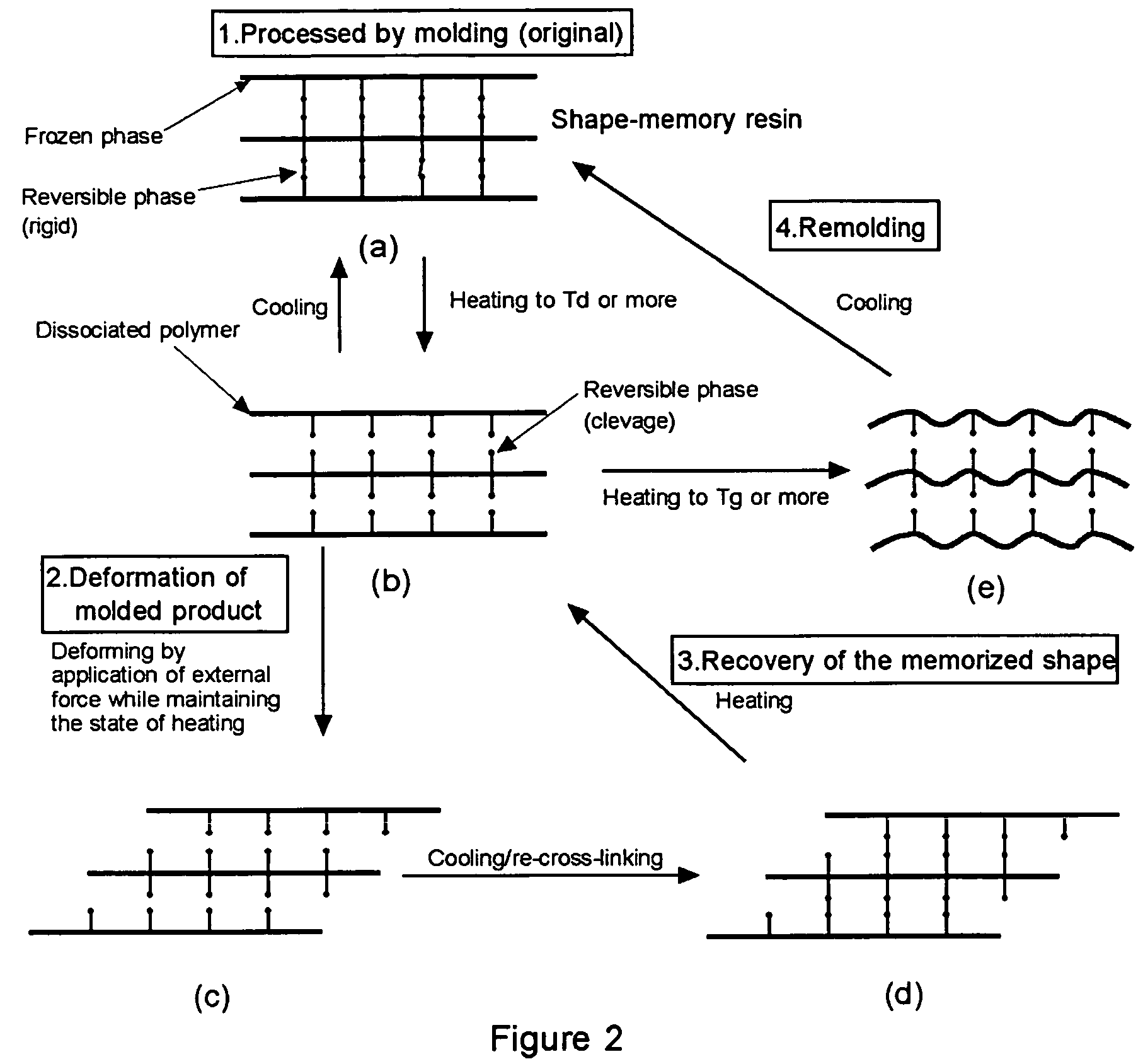Shape-memory resin performing remoldability and excellent in shape recovering property, and molded product composed of the cross-linked resin
a technology of cross-linked resin and shape memory, which is applied in the direction of products, layered products, transportation and packaging, etc., can solve the problems of weak resin, poor recycling efficiency of resin, and force of frozen phase of thermoplastic, and achieve excellent molding and remolding properties, and excellent shape-recovering properties.
- Summary
- Abstract
- Description
- Claims
- Application Information
AI Technical Summary
Benefits of technology
Problems solved by technology
Method used
Image
Examples
example 1
[0135]First, 1000 g of commercially available polylactic acid (trade name: Lacty®, manufactured by Shimadzu Corporation) and 75.6 g of pentaerythritol were melted to mix at 200° C. for 3 hours. In this manner, a transesterification was performed. The resultant mixture was dissolved in 1 L of chloroform and then poured in excessive methanol to reprecipitate Polylactic acid [R1] with hydroxyl end.
[0136]Subsequently, 100 g of 2-furfuryl alcohol, 112 g of succinic anhydride, and 2 ml of pyridine were dissolved in 1 L of chloroform and heated under reflux for 10 hours. This solution was washed with water and the solvent was distilled off to synthesize a furan derivative [F1]. To 500 ml of chloroform, 31.4 g of 1-ethyl-3-(3′-dimethylaminopropyl)carbodiimide hydrochloride (WSC), 13.0 g of pyridine, 32.5 g of [F1] and 100 g of [R1] were added and heated under reflux for 10 hours. The resultant solution was washed with water, dried over magnesium sulfate, and the solvent was distilled off to...
example 2
[0141]First, 2,000 g of commercially available polylactic acid and 178 g of sorbitol were melted to mix at 200° C. for 15 hours. In this manner, a transesterification was performed. The resultant mixture was dissolved in 2 L of chloroform and then poured in excessive methanol to reprecipitate Polylactic acid [R5] with hydroxyl end.
[0142]Subsequently, to 400 ml of chloroform, 72 g of WSC, 30.0 ml of pyridine, 74.2 g of [F1], and 132 g of [R5] were added and heated under reflux for 43 hours. This solution was washed with water, and dried over magnesium sulfate, and thereafter, the solvent was distilled off to obtain furan modified polylactic acid [R6] (molecular weight: 6940).
[0143]Then, 10.3 g of the [R6] and 1.20 g of [R3] synthesized above were weighed, melted to mix at 170° C. for 3 minutes, cross-linked at 100° C. for one hour to obtain a cross-linked product [R7] of polylactic acid through the Diels-Alder reaction. The Tg was 65° C. and the Td was 155° C. The crosslink density w...
example 3
[0145]First, 2,000 g of commercially available polylactic acid and 197 g of sorbitol were melted to mix at 200° C. for 15 hours. In this manner, a transesterification was performed. The resultant mixture was dissolved in 2 L of chloroform and then poured in excessive methanol to reprecipitate polylactic acid [R8] with hydroxyl end.
[0146]Subsequently, to 500 ml of chloroform, 72.3 g of WSC, 30.0 ml of pyridine, 74.5 g of [F1], and 120 g of [R8] were added and heated under reflux for 43 hours. This solution was washed with water and dried over magnesium sulfate and thereafter, the solvent was distilled off to obtain furan modified polylactic acid [R9] (molecular weight: 6286).
[0147]Then, 10.0 g of [R9] and 1.23 g of [R3] synthesized above were weighed, melted to mix at 170° C. for 3 minutes, cross-linked at 100° C. for one hour to obtain a cross-linked product [R10] of polylactic acid through the Diels-Alder reaction. The Tg was 70° C. and the Td was 154° C. The crosslink density was ...
PUM
| Property | Measurement | Unit |
|---|---|---|
| Tg | aaaaa | aaaaa |
| Tg | aaaaa | aaaaa |
| Tg | aaaaa | aaaaa |
Abstract
Description
Claims
Application Information
 Login to View More
Login to View More - R&D
- Intellectual Property
- Life Sciences
- Materials
- Tech Scout
- Unparalleled Data Quality
- Higher Quality Content
- 60% Fewer Hallucinations
Browse by: Latest US Patents, China's latest patents, Technical Efficacy Thesaurus, Application Domain, Technology Topic, Popular Technical Reports.
© 2025 PatSnap. All rights reserved.Legal|Privacy policy|Modern Slavery Act Transparency Statement|Sitemap|About US| Contact US: help@patsnap.com



